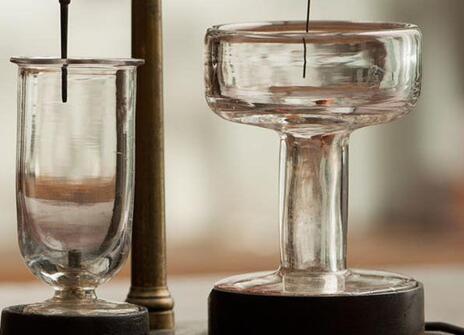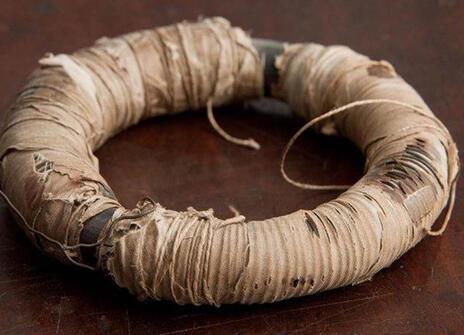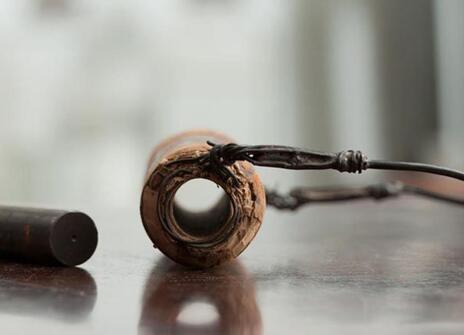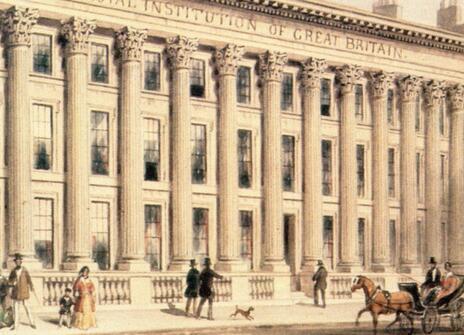Date: 1822
Place made: Basement Laboratory of the Ri
Alternative name: Mercury Bath
Materials: Glass, wood, copper, iron, wax, mercury
Measurements: H: 247mm, W: 173mm, D: 121mm
Description
This simple looking object was made by Michael Faraday in 1822. Its simplicity masks its true importance as the first surviving electric motor.
In 1820 Hans Christian Ørsted announced his discovery that the flow of an electric current through a wire produced a magnetic field around the wire. André-Marie Ampère followed on and showed that the magnetic force apparently was a circular one, producing in effect a cylinder of magnetism around the wire. No such circular force had ever before been observed.
Self-taught British scientist Michael Faraday (1791 – 1867) was the first to understand what these discoveries implied. If a magnetic pole could be isolated, it ought to move constantly in a circle around a current-carrying wire.
In 1821 Faraday set about trying to understand the work of Ørsted and Ampère, devising his own experiment using a small mercury bath. This device, which transformed electrical energy into mechanical energy, was the first electric motor.
This apparatus is the only original surviving example made by Faraday the following year after his discovery in 1822.
The motor features a stiff wire which hangs down into a glass vessel which has a bar magnet secured at the bottom. The glass vessel would then be part filled with mercury (a metal that is liquid at room temperature and an excellent conductor). Faraday connected his apparatus to a battery, which sent electricity through the wire creating a magnetic field around it. This field interacted with the field around the magnet and caused the wire to rotate clockwise.
This discovery led Faraday to contemplate the nature of electricity. Unlike his contemporaries, he was not convinced that electricity was a material fluid that flowed through wires like water through a pipe. Instead, he thought of it as a vibration or force that was somehow transmitted as the result of tensions created in the conductor.
Where can I view this?
This object is currently on display in Faraday's original magnetic laboratory on the lower ground floor of the Royal Institution.




